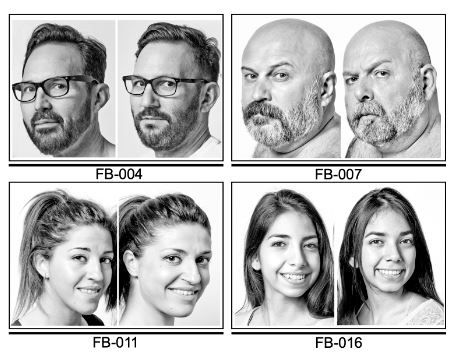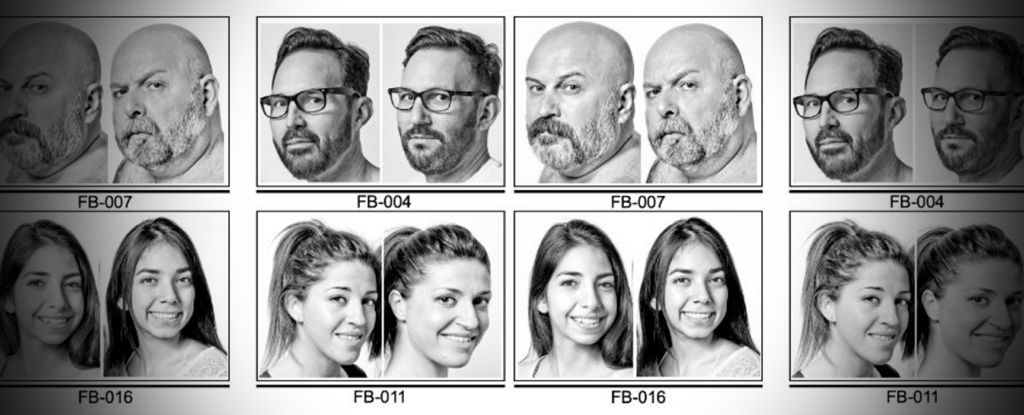Products You May Like
It appears there’s more to a doppelgänger than meets the eye.
DNA analyses of 16 look-alike couples have revealed some unrelated people with super similar faces also have similar heights, weights, habits, and behaviors.
Human resemblance, it would seem, is more than just skin deep.
In the study, 3 different facial recognition algorithms were tasked with scoring the likeness of 32 look-alikes pairs; half were classified as doppelgängers by all 3 algorithms. Researchers then conducted genetic analyses and found 9 pairs of “ultra” look-alikes.
Together, these super doppelgängers share 19,277 common genetic variations in 3,730 genes, many of which are to do with body and facial traits.
Their personal questionnaires suggest they share even more than that.
Some lifestyle features, like smoking habits, weight, and level of education, were also associated with many look-alike pairs.
Admittedly, the sample size is small, but the results, according to the authors, are “striking”.
“These findings do not only provide clues about the genetic setting associated with our facial aspect, and probably other traits of our body and personality, but also highlight how much of what we are, and what defines us, is really inherited or instead is acquired during our lifetime,” the authors write.

The powers of nurture and nature are not easily teased apart, and while twin studies are a popular form of research in the field of genetics, doppelgängers are a bit of an untapped market.
Since 1999, Canadian artist François Brunelle has been using the far-reaching fingers of the internet to identify and keep track of look-alikes around the world.
Now, researchers are tapping into his catalog to better understand both what makes us human and what sets individuals apart.
The current study draws on 64 photographs of look-alikes recruited from francoisbrunelle.com, along with saliva DNA and lifestyle questionnaires for each participant.
According to genetic analyses, look-alikes were ultimately found to share similar genetic make-ups, even though pairs were not related.
Individual participants differed, however, in how their life impacted their genome.
Each person’s microbiome, for instance, is heavily influenced by environmental factors like nutrition, exercise, and smoking.
This means the world of bacterial life in our guts differs quite a lot from individual to individual, even among those who have similar genetics.
The same goes for each look-alike’s epigenome, which describes the chemical modifications made to coiled strands of DNA that can turn genes on or off. These differed even among ultra look-alikes in the current study.
This study builds on past research that suggests the structure of the human face, especially the nose, is sculpted by specific parts of DNA.
That doesn’t mean look-alikes are long-lost twins or kindred spirits. None of the participants in the current study inherited their genes from the same recent ancestors.
Their genetic similarities represent a distinct subset of human resemblance that could one day be used to predict how an individual might grow and age.
“We provided a unique insight into the molecular characteristics that potentially influence the construction of the human face,” says biomedical scientist Manel Esteller from the Josep Carreras Leukaemia Research Institute in Barcelona, Spain.
“We suggest that these same determinants correlate with both physical and behavioral attributes that constitute human beings.”
The study was published in Cell Reports.
